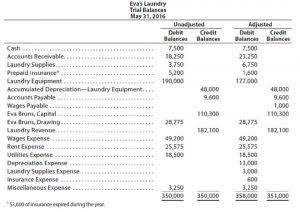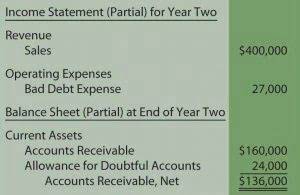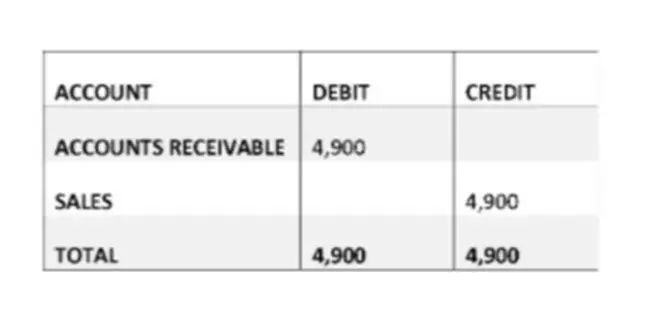Content
- Similarities Between Financial And Managerial Accounting
- Follow Us
- When Managerial Accounting Works Best
- Differentiating Between Financial And Managerial Accounting
- Definition Of Management Accounting
- Does Managerial Accounting Follow Gaap?
- What Is Financial Accounting?
- Managerial Accounting Vs Financial Accounting: The Top 10 Differences
- The Top 25 Tax Deductions Your Business Can Take
For any public company, financial accounting processes must abide by a very specific set of rules provided by the Generally Accepted Accounting Principles , the accounting standard adopted by the U.S. If you’ve always thought that managerial accounting, sometimes referred to as management accounting, and financial accounting were the same type of accounting, you may be in for a surprise. Ultimately, financial statements confirm an organization’s performance so regulators and investors often use them to assess the financial health of an organization. In the U.S., the financial accounting reports of a company are governed by the Generally Accepted Accounting Principles as adopted by the U.S. A financial accounting system is aimed at external decision-makers such as investors, regulators, and creditors, while a managerial accounting system is aimed at internal decision-makers such as managers. The perception that more training is required for financial accounting might be reflected in the higher pay rates of financial accountants over managerial accountants.
- Managerial accountancy and financial accountancy are two different types of accountancy, which is why these two professions have so many different attributes.
- Management accounting is focused on internal organizational goals for business.
- The data collected and the results reported help managers choose the best courses of action.
- The other difference is efficiency with financial accounting being more efficient based on the reporting type done.
- Managerial accounting is interested in the systems of your business and reducing problems and streamlining operations therein.
Financial accountants, however, must follow these regulations religiously. International companies prefer managerial accountants who passed the CMA or certified management accountant certification. Financial Accounting considers the entire business scenario and reports the bigger financial picture of the organization. In financial accounting, consolidated figures display the overall performance of the company. Whereas, management accounting follows more detailed and focused study of business and organization. Companies who have been around a while will use historical data for budgeting purposes, while new companies need to prepare budgets and business plans based on what they hope to happen.
Similarities Between Financial And Managerial Accounting
Here, you will get all the insightful information & differences about financial & managerial accounting and what features make them apart. Though some accounting software applications do offer budgeting capability, many businesses use a spreadsheet application such as Microsoft Excel to create budgets and estimates.
Appointment Scheduling 10to8 10to8 is a cloud-based appointment scheduling software that simplifies and automates the process of scheduling, managing, and following up with appointments. Pass both parts of the Certified Management Accountant Exam to earn the CMA designation. Part one covers financial planning, performance and analytics, while the second part involves strategic financial management. Financial accounting looks to the past to examine financial results that have already been achieved, so it is historically focused. I understand this consent is not a condition to attend UWF or to purchase any other goods or services. Cost accounting is but one key element of managerial accounting skills.
All of these changes demand that the manager’s planning be based in large part on estimates of what will happen rather than on summaries of what has already happened. Financial accounting is helpful in the proper record keeping of numerous business transactions. Further, it facilitates the comparison of the performance of two periods of an entity or between the two entities. Conversely, management accounting is helpful in analysing the performance so as to make the required strategy or formulate such policies so that organization can succeed.
Follow Us
Data in these reports tend to be more “granular” in nature, examining performance down to the departmental level. Smaller and midsize companies often combine the functions of managerial and financial accounting under one umbrella. Such accounting departments require an equal focus on financial accounting vs managerial accounting both aspects to support the needs of the internal and external audiences that will consume the financial data. When the two accounting competencies are combined into one department, it is important for department leaders to possess the knowledge and skills specific to each area.
The information is collected by managers particularly to enhance strategic planning and come up with practical goals. Financial accounting does have internal value, but mostly needed by stakeholders outside an organization since it seeks to disclose the financial health of the company and its performance.
When Managerial Accounting Works Best
The managerial accounting curriculum is designed to prepare you for the Institute of Managerial Accountants’ Certified Managerial Accountant examination. Hearst Newspapers participates in various affiliate marketing programs, which means we may get paid commissions on editorially chosen products purchased through our links to retailer sites. Discover the best way to prepare a restaurant budget and learn what software too… Financial accounting takes a wider view and examines the financial status of the entire business. Reports to those inside the organization for planning, directing and motivating, controlling and performance evaluation. Show bioTammy teaches business courses at the post-secondary and secondary level and has a master’s of business administration in finance.
- All of these changes demand that the manager’s planning be based in large part on estimates of what will happen rather than on summaries of what has already happened.
- The order process, tax issue and invoicing to end user is conducted by Wondershare Technology Co., Ltd, which is the subsidiary of Wondershare group.
- Financial accounting focuses on recording transactions, often in the form of financial statements.
- UWF’s online programs can provide the expertise you need to expand your career options and prepare you for an exciting future.
- The company is free to produce its rules and regulation on managerial reports which means you will not get any centralized regulating reports.
- Financial accounting provides investors and tax professionals the hard business facts based on assets, liabilities and equity, so they can properly assess a company’s performance and tax obligations.
- When most people think of accounting, they think of a complex web of rules and processes that must be followed, lest the IRS uncover any mistakes.
Financial accounting heavily used by public regulators, creditors and shareholders. But if you want more advanced features & functionalities to operate your business process then you can do that do at its very competitive yet affordable pricing plan.
The course emphasizes the use of accounting information by managers within the organization and by shareholders, lenders, and other outside parties. Basic accounting terms and concepts, and the language of financial management are presented as well as the essentials of the accounting process. The course also builds an awareness of the ethical, information and regulatory environment of accounting. Nevertheless, corporate finance performs a separate function from managerial accounting.
Finally, we’ll provide a table that summarizes the difference between managerial and financial accounting reports. Because managerial accounting is intended only for an internal audience of managers and decision-makers, the rules are less strict. Where financial accounting yields a specific set of financial reports—theincome statement,balance sheet, and usually acash flow statement—managerial accounting can produce a wide range of performance reports and metrics. Corporate finance arms organizations with essential financial data that helps them compete in an increasingly competitive marketplace. Managerial accounting uses this data to help develop processes around internal decision-making, financial planning and budgeting. Combined, these two functions give organizations a complete view of how costs affect their business, and what actions they need to take to improve productivity. Most accounting tasks can be divided into financial accounting and managerial accounting.
Differentiating Between Financial And Managerial Accounting
Essentially, it is the precise and accurate recording of the economic transactions of a company. Though there are different types of accounting and they have multiple purposes but its core characteristics are the same. But for the last few years, the comparison between Financial Accounting Vs Managerial Accounting has always been a topic of discussion in the business industry. Financial accounting analyzes company results that have already been achieved, with those results contained in financial statements. Managerial accounting frequently looks ahead, while financial accounting offers analysis of historical data.
To pursue a career in business leadership, it is recommended to take managerial accounting after financial accounting. Financial accountants have a solid knowledge base and skill set in accounting with a good understanding of debit, credit, and financial reporting, which is helpful when preparing managerial financial reports.
Definition Of Management Accounting
Management accounting predates financial accounting and was introduced at the end of the 1800s. It provided only the essential information needed to manage production of early products like steel and textile. At the time, there weren’t shareholders and unsecured debt, so there was not a significant need for precise and extensive reports. In the early 1900s, accounting requirements standardized with the growth of credit, governmental regulation and taxes. Companies were required to provide financial reports to these outside entities, who wanted to keep tabs on money made. GAAP was formally developed as a standard in 1939 according to the Strategic CFO. It’s important to note that financial accounting reports can be used by internal users; however, managerial accounting reports are typically not released to the public.
The certification for each of these types of accounting is different as well. People who have been trained in financial accounting have a Certified Public Accountant designation, while those with a Certified Management Accountant designation are trained in managerial accounting. Investopedia requires writers to use primary sources to support their work. These include white papers, government data, original reporting, and interviews with industry experts.
Standards may also be one of the differences that occur when it comes to the two types of accounting. Financial accounting has to comply with the set standards in accounting. Tactical execution and measurements need to be in place to determine the success of strategic plans to enter new markets, expand product offerings, or sell off a well-established part of the business. To be effective, managerial accountants must have the skills to calculate, assess and communicate the options.
Students learn how to write an annotated bibliography and use APA documentation for in-text citations and references. The Institute of Management Accountants reports that professionals who have earned the CMA certification make nearly $28,000 more in total compensation each year than their non-certified peers. CMAs earned an average annual salary of $108,455 according to the most recent survey conducted in 2013. The total average compensation for CMAs that year was $125,734 including bonuses. We offer an easy online application and do not require SAT or ACT tests for admission to our undergraduate programs.
What Is Financial Accounting?
There is no certain format of reporting and as such reports are for internal use, they may be or may not be published. As the name suggests, financial accounting considers only the financial aspects in reporting. All the statements that a company generates for reporting and for understanding the financial position and performance come under financial accounting.
Managerial Accounting Vs Financial Accounting: The Top 10 Differences
Our priority at The Blueprint is helping businesses find the best solutions to improve their bottom lines and make owners smarter, happier, and richer. That’s why our editorial opinions and reviews are ours alone and aren’t inspired, endorsed, or sponsored by an advertiser. Editorial content from The Blueprint is separate from The Motley Fool editorial content and is created by a different analyst team. We may receive compensation from partners and advertisers whose products appear here. Compensation may impact where products are placed on our site, but editorial opinions, scores, and reviews are independent from, and never influenced by, any advertiser or partner. Case Studies & Interviews Learn how real businesses are staying relevant and profitable in a world that faces new challenges every day. Beginner’s Guides Our comprehensive guides serve as an introduction to basic concepts that you can incorporate into your larger business strategy.
The Top 25 Tax Deductions Your Business Can Take
Managerial finance combines economic principles with accounting practices to help executives and management teams make smart business decisions. Corporate finance and managerial accounting are the two major components that make up managerial accounting. Although each serve different functions, both complement each other when it comes to helping managers make important financial and operational decisions. Financial accounting is primarily concerned with reporting for the company as a whole. By contrast, managerial accounting forces much more on the parts, or segments, of a company. These segments may be product lines, sales territories divisions, departments, or any other categorizations of the company’s activities that management finds useful.
Underaccrual accounting, knowing where your cash is at any given time can be confusing. Cash flow is broadly defined as all the inflows and outflows of cash within your business. While a cash flow statement can be a very helpful report, generated using financial accounting, it can be created on a monthly frequency at a maximum. The managerial team needs historical data from the financial team to prepare their reports.
Managerial accounting is different than financial accounting in that it is more concerned with providing operational reports that are useful for internal management. Financial accounting focuses more on the reporting of https://www.bookstime.com/ a company’s financial transactions to investors, lenders, and other external audiences. Financial accounting must also comply with a variety of accounting standards that do not apply to internal accounting practices.








Son yorumlar